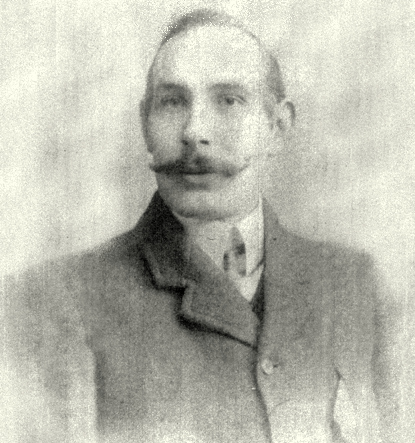Frank Moscrip Wilson was born in Sudborne in 1882. He was the only surviving child of John and Elizabeth Jane (née Whyard). John was a forester who had moved to Suffolk from Scotland and Elizabeth was the daughter of a mariner from Orford. Frank’s other two siblings, John Lloyd and Mary Christina, both died in childhood. In 1901, the family were living in Brewer’s Lane, Woodbridge, and Frank was apprenticed to A W Robertson, the owner of a boatyard in Woodbridge. In 1909, Frank married Ethel Mary Leggett and the couple moved into 13 Prospect Place, just three doors away from his mother and father.
By the time the war started in August 1914, Frank and Ethel had four children, Lloyd John, Henry Moscrip, Bessie Mary and Samuel William, a fact that did not stop Frank from enlisting on the 1st September. Frank joined the 3rd Battalion Suffolk Regiment at their war station in Felixstowe for training, ready to be posted to another battalion in the Regiment for service in France. In January 1915, he was promoted to Lance Corporal and three months later, it was confirmed as a paid position. Frank remained with the 3rd Suffolks until 26th November 1915 when he was temporarily released from military service and attached to Robert Rodgers and Company, Boatbuilders in Greenock, Scotland. It was here that Frank would work in the heart of the Clyde shipbuilding area on Admiralty contracts. On 15th September 1917, Frank was transferred to John Isaac Thornycroft’s Hampton Launch Works on Platt’s Eyot on the River Thames. John Thornycroft had suggested to the Admiralty that the Royal Navy could use a fast motor launch armed with torpedoes to patrol the British Coastline. In January 1916, the yard received their first order for twelve 40ft boats capable of achieving a top speed of around twenty-five knots or twenty-eight miles per hour.
Frank was to apply the skills he had learned at Robertson’s Boatyard while working at the cutting edge of fast motorboat design. He continued to work on Platt’s Eyot until 18th December 1918, just over a month after the Armistice.
As his war service had taken place within the UK, Frank was not entitled to any medals. He died in 1935 and is buried at Melton Old Church.

